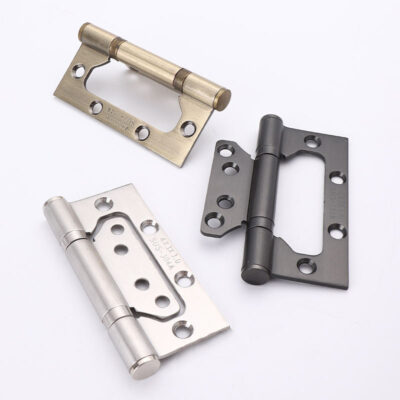🏗 What Makes Continuous Hinges Different
When door size, weight, or usage frequency exceeds typical limits, continuous hinges—also known as piano hinges—offer unmatched stability and longevity.
Instead of bearing weight on three or four hinge points, a continuous hinge distributes load evenly along the entire door height. This design eliminates concentrated stress and extends both door and frame life.
Compared with standard butt hinges, piano hinges reduce sagging, improve alignment, and resist tampering—making them the preferred solution for schools, hospitals, and industrial facilities that demand durability under constant use.
To ensure consistent mechanical performance, many procurement teams partner with specialized Continuous Hinges Manufacturers who can provide verified load data, material certifications, and custom length options for large-scale installations.
⚙️ Core Engineering Advantages
Continuous hinges offer several mechanical and operational benefits over segmented hinge types:
-
Even Load Distribution: The door’s weight is shared across the full hinge length, reducing frame stress.
-
Alignment Stability: The long pin axis ensures consistent alignment and prevents door twisting over time.
-
Enhanced Security: Fewer hinge gaps mean less exposure to tampering or forced entry.
-
Smooth Motion: Reduced friction between hinge knuckles leads to quieter operation.
-
High Cycle Life: Properly designed piano hinges can exceed 1,000,000 open-close cycles, ideal for commercial use.
These advantages make them standard in environments like schools, airports, and correctional facilities where hinges operate thousands of times per month.
🔩 Material Selection and Finish
The hinge’s material defines its performance, especially in environments with humidity, temperature variation, or chemical exposure.
-
Stainless Steel: Offers maximum corrosion resistance and tensile strength, common for hospitals or coastal facilities.
-
Aluminum: Lightweight and economical, suitable for indoor partitions and large but low-load doors.
-
Brass: Decorative but less common for heavy-duty industrial use.
-
Steel with Plating: Cost-effective for interior applications when corrosion exposure is minimal.
Finishes such as anodizing, passivation, or powder coating extend product life and maintain appearance. When evaluating suppliers, ask for salt-spray or humidity chamber test data to confirm durability.
🧰 Key Specifications to Review
When specifying continuous hinges, procurement teams should confirm the following data points:
-
Pin diameter and leaf thickness
-
Knuckle length and pitch tolerance
-
Hinge length (commonly full door height, but custom cuts available)
-
Mounting hole spacing for field installation
-
Bearing type: Plain, PTFE, or ball bearing for smoother motion
Testing hinges on a mockup door can reveal deflection and fit issues before committing to full production. This step is critical when ordering in bulk for multi-building projects.
🧱 Installation and Maintenance Considerations
Continuous hinges simplify installation by aligning the door automatically. They also reduce service frequency, since the load is not concentrated on individual screws.
Still, proper fasteners and periodic lubrication ensure optimal life span. Use stainless or coated screws compatible with the hinge metal to prevent galvanic corrosion.
Hinges should be installed with the door closed and supported on wedges to maintain correct clearances. Over-tightening screws at the ends can distort alignment; torque should be uniform across the entire hinge.
🏭 When to Choose Continuous Hinges
Piano hinges are the smart choice when:
-
Door height exceeds 2.2 meters
-
Door weight is above 80 kg
-
Usage exceeds 200,000 cycles/year
-
High security or tamper resistance is required
They also improve aesthetics by hiding the hinge mechanism behind a continuous profile, offering a cleaner architectural look. For hotel rooms, elevators, or industrial cabinets, these advantages combine mechanical reliability with professional presentation.
For organizations managing multi-site rollouts, collaborating with a professional Hinge Manufacturers network ensures stable pricing, logistics coordination, and global material consistency.
🔍 Conclusion
Continuous or piano hinges are more than just an upgrade—they’re a structural reinforcement for high-duty doors. Their uniform stress distribution, long service life, and low maintenance make them an essential choice for demanding commercial applications.
When performance and safety matter, select proven hinge suppliers with engineering documentation and testing credentials. For accurate production, guaranteed tolerances, and reliable global delivery, partner with trusted Continuous Hinges Manufacturers and industry-recognized Hinge Manufacturers.









